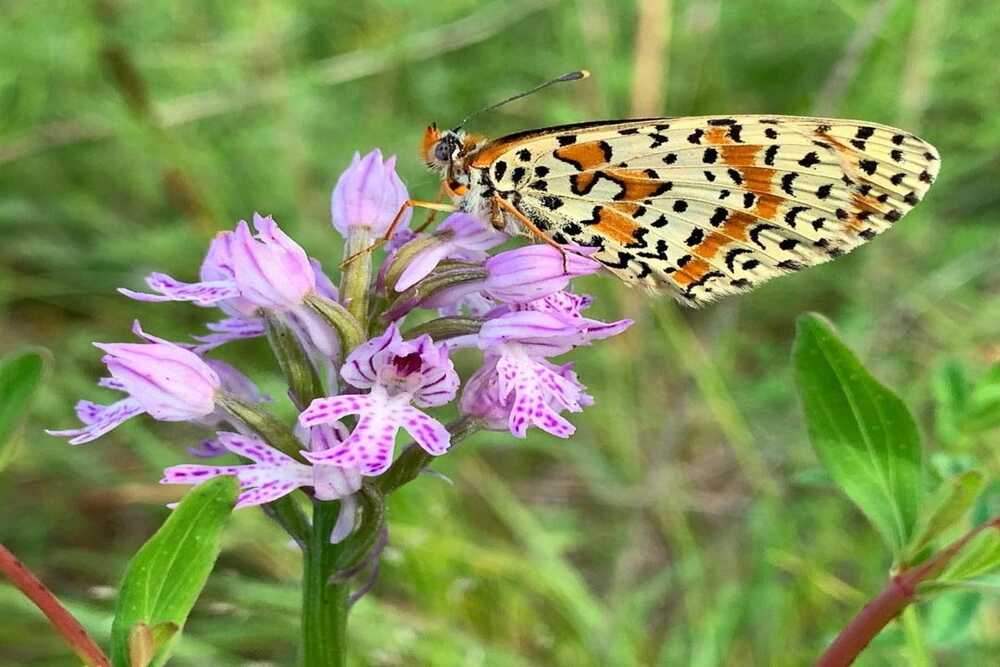The project allowed the restoration of 205 thousand square meters of habitat at risk in Piedmont and Lombardy, with important benefits for local biodiversity. The final event took place on February 20, 2025 at the Kosmos Museum in Pavia, with important results and testimonies at the work done
Life Drylands Party: a project for the protection of arid habitats
Started in 2019, the project Life Drylands was carried out thanks to a loan of 1.3 million euros and the collaboration between the University of Pavia and several partners. Among these, the network of Botanical gardens of Lombardyl’University of Bologna and several management bodies of protected areas. The main objective was the recovery of natural habitats at risk in the prairies and hacksaws of eight sites Natura 2000, with a positive impact on the biodiversity.
Concrete results in support of biodiversity
Thanks to the commitment of researchers and technicians, in five years of work, fundamental habitats have been restored. Among these, the moors (habitat 4030), the arid prairies (habitat 6210) and the corineaforetes (species of graminaceae) (habitat 2330). In total, 205 thousand square meters of existing habitats were recovered and 10,300 square meters of new areas created.
An intervention that brought a significant increase in biodiversity, with the increase in species of vascular plants and mosses. In addition to butterflies and the population of Coleotori Carabidi. Not to mention also a strengthening of the interactions between plants and pollinators.
Life Drylands Party: a conference and a celebration
The title of the event, LIFE Drylands Partyreflects the spirit of celebration of the project, as the Professor Silvia Assini, professor of botany at theUniversity of Pavia.
«In seeing the restored habitats, however, with the increase in vascular plants and mosses, the population of insects and the interactions between plants and pollinators, it seemed natural to give the work day a festive character, shared with everyone because the benefits of this work are for everyone», Concludes the scientific coordinator.
Tangible benefits for the ecosystem
The Lifedrylands project has produced significant results in different areas, including the restoration of the habitats that generated tangible benefits for the ecosystem. So the training of staff and the dissemination of knowledge. A total of 134,650 m² of habitat 4030, 62,142 m² of habitat 6210 and 8,216 m² of habitat 2330 were restored, with ex-novo creation of 10,343 m² of habitat. In addition, 12,337 new herbaceous plants and 2,521 wood plants were planted.
The initiative involved sixty -six members of the parks staff, who were trained on the project, and saw the participation of ninety professionals in the internships. The project also favored the collaboration between twelve Life in Networking projects and organized thirteen public events in partner parks.
Results of the Lifedrylands project
On the scientific and educational level, four scientific publications were produced, fourteen communications in scientific conferences and materials have been distributed as sixteen habitat cards in Italian and English. In the educational field, twenty -four classes in training activities were involved, and ten Discovery Kits were built to raise awareness of schools and the public.
As for the spread of knowledge, 135 articles in press review were made, four guidelines in Italian and English and two in French, as well as a manual on “Good practices”. The project also produced a brochure on “Ecosystem services”. The involvement of the communities was broad, with twelve municipalities involved and twenty -eight companies and participating suppliers.
Finally, the project recorded important results in the ecological field. With a 12% increase in species of poliny plants and 117% of the interactions between plants and pollinators. A PCTO program with a scientific high school was also organized, and three research checks were attributed.













